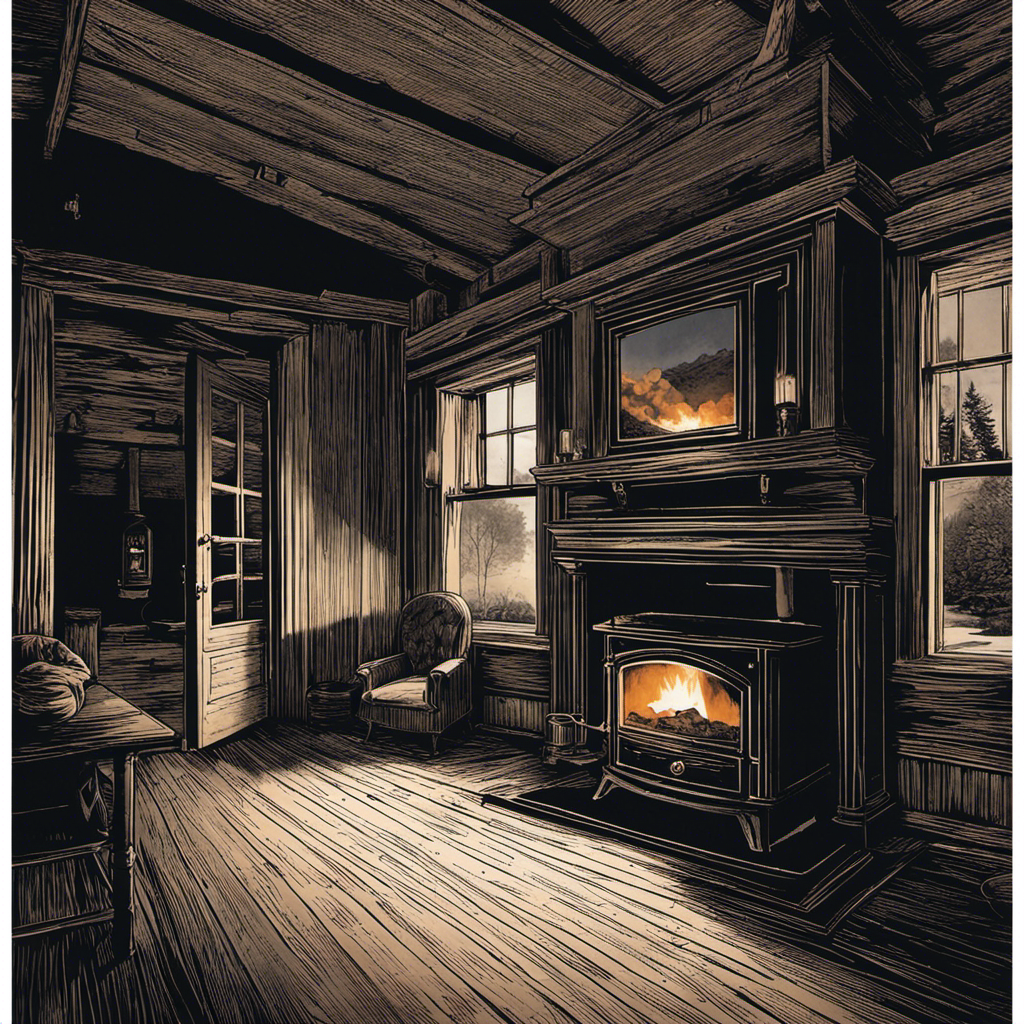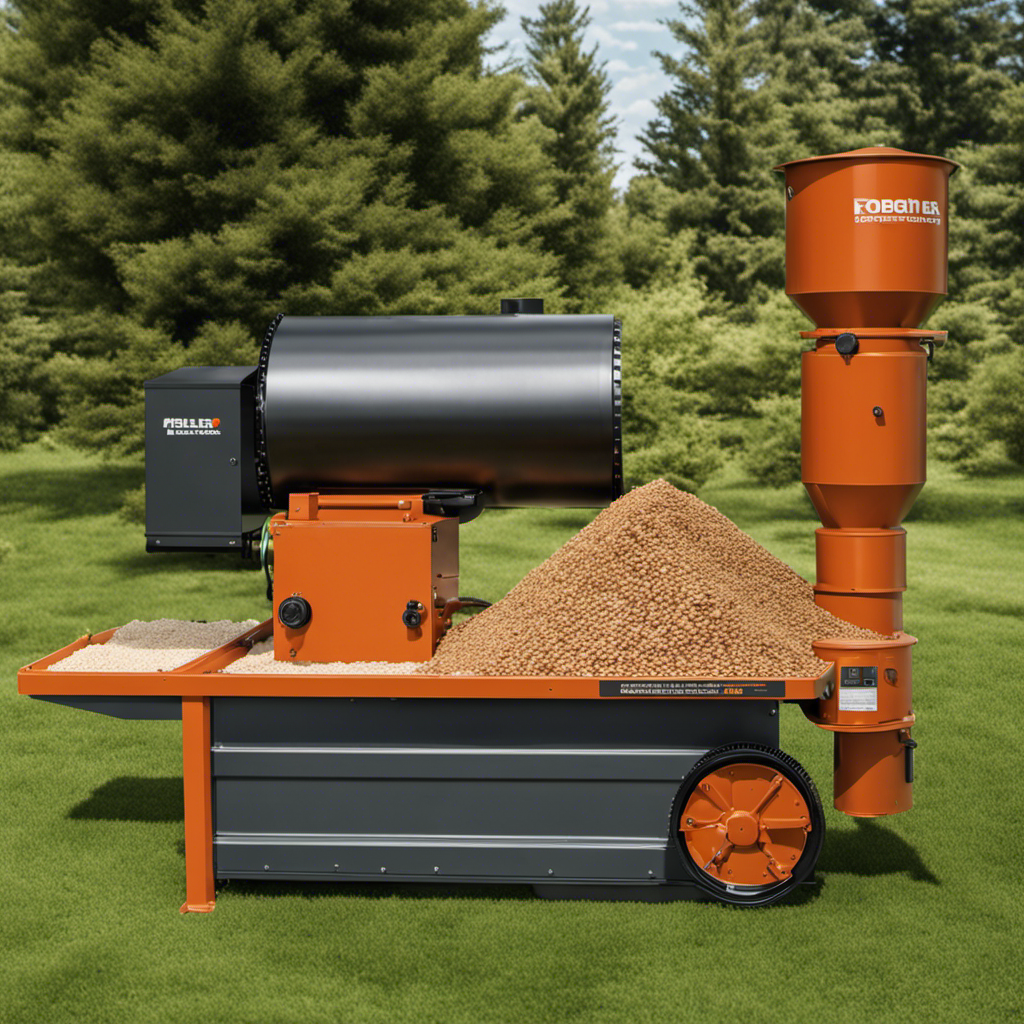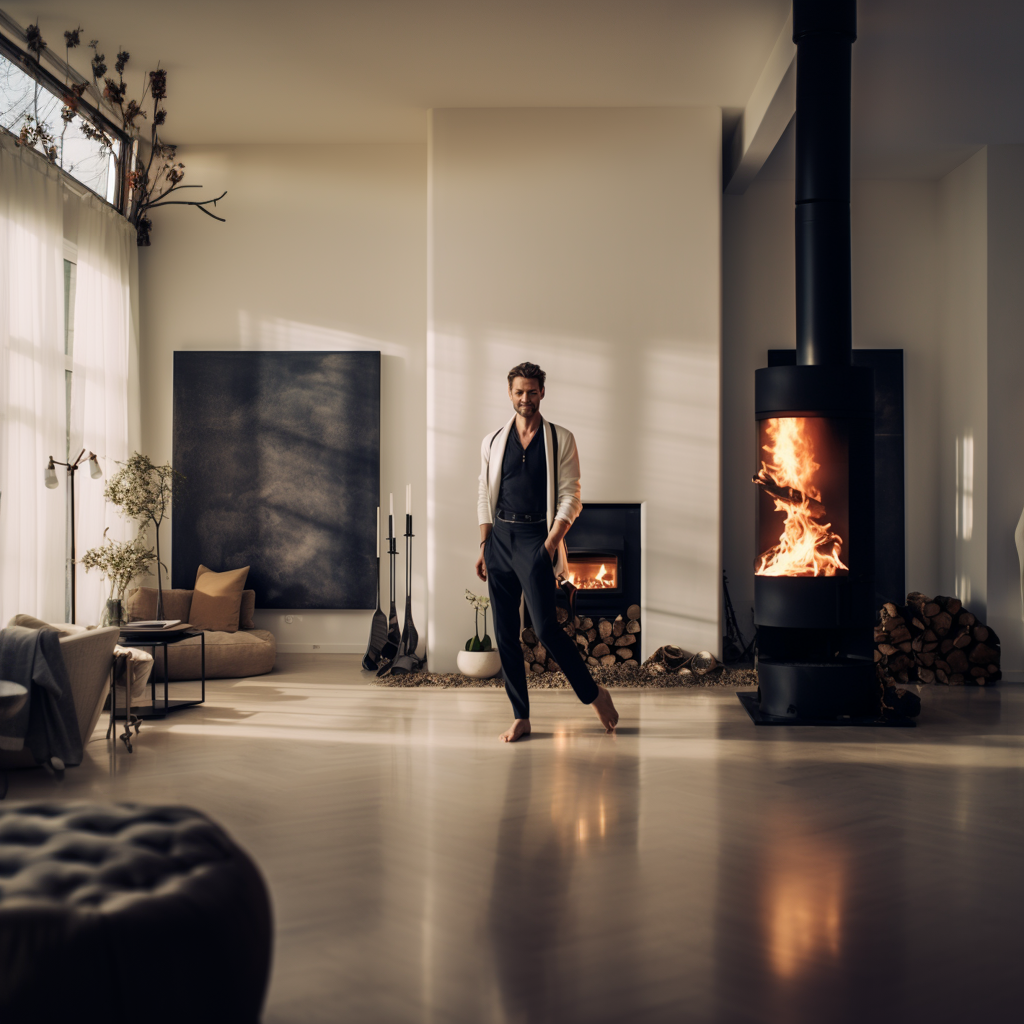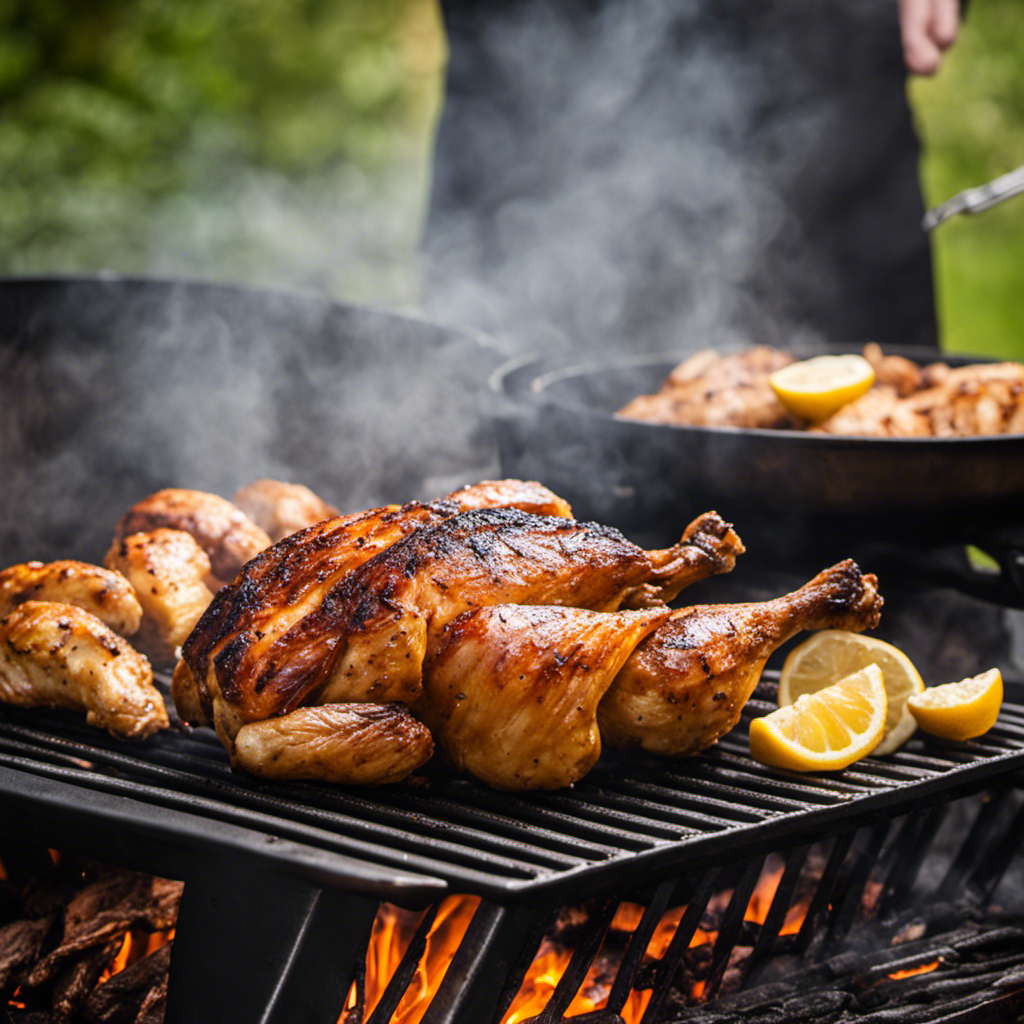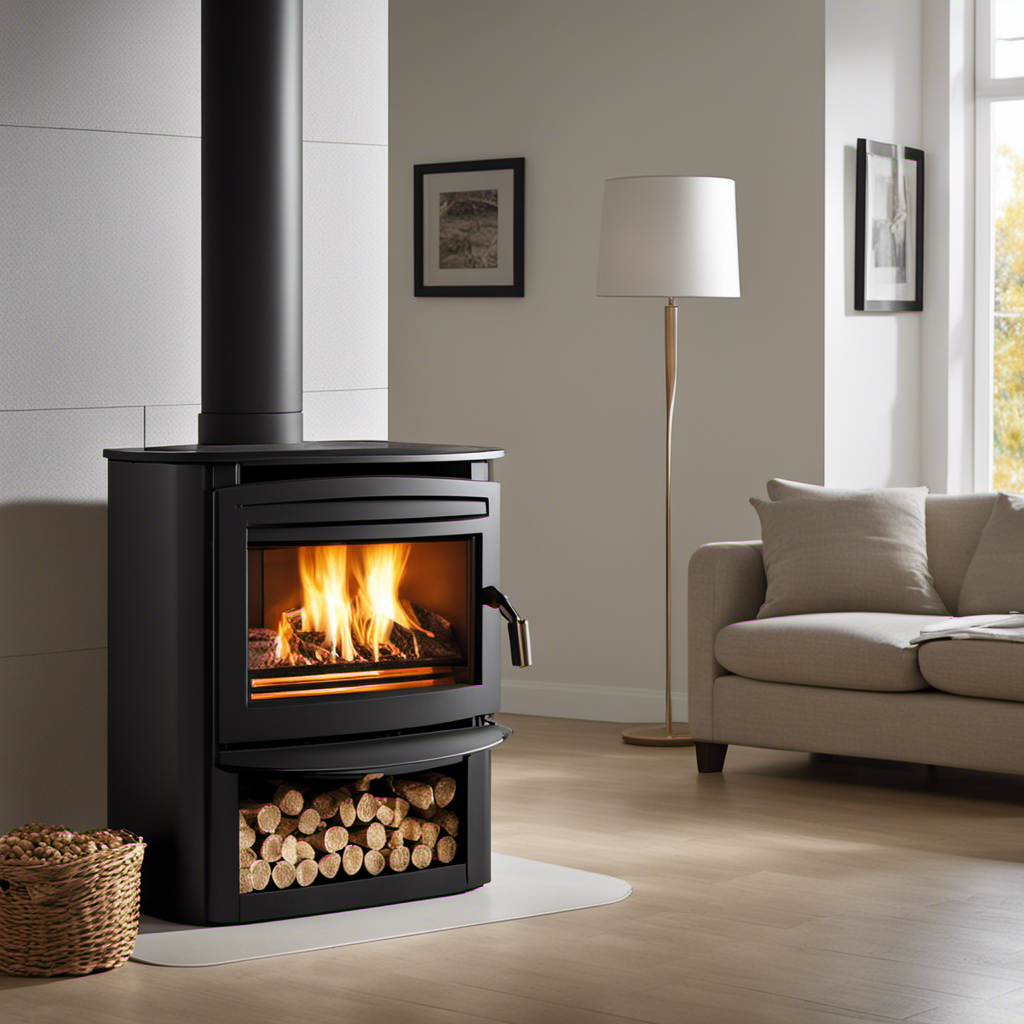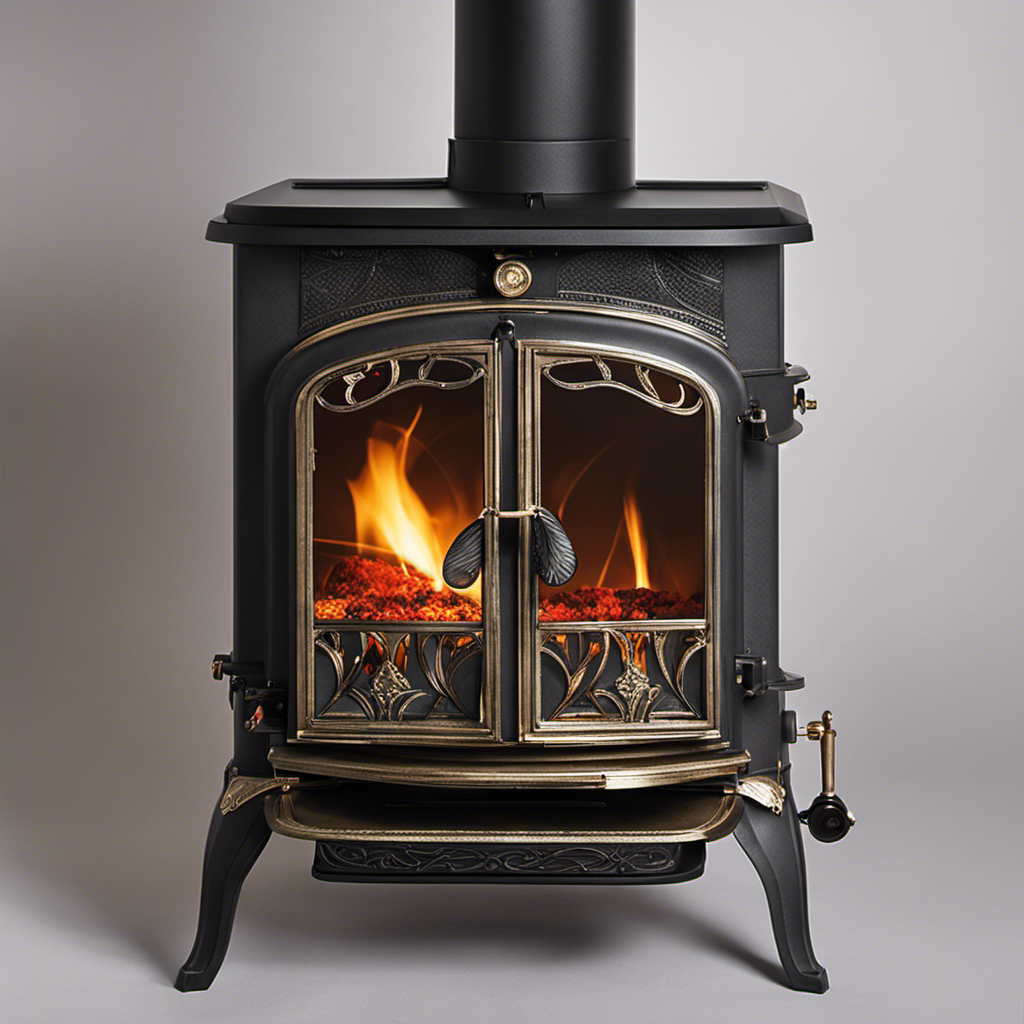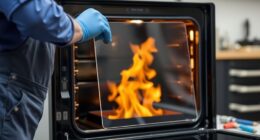Were you aware that despite their popularity as a method for warming homes, pellet stoves could harbor a hidden danger? These heating units release carbon monoxide, a dangerous gas that can cause serious health issues. Being exposed to this gas can result in damage to the brain, heart issues, and possible failure of different organs.
But don’t worry, in this article, we’ll discuss the dangers of carbon monoxide, how to prevent its accumulation, and provide essential safety precautions for using pellet stoves.
Stay informed and keep your loved ones safe!
Key Takeaways
- Pellet stoves produce carbon monoxide, which can be dangerous if inhaled.
- It is important to take precautions to prevent carbon monoxide accumulation in the home, such as ensuring a constant supply of fresh air and installing carbon monoxide detectors.
- Proper ventilation and maintenance of pellet stoves are crucial to prevent excessive carbon monoxide production.
- Pellet stoves are a cost-effective and environmentally friendly heating option, but it is essential to follow the manufacturer’s instructions for safe operation and maintenance.
How Pellet Stoves Produce Carbon Monoxide
We should be aware that pellet stoves produce carbon monoxide when they burn wood, which can pose serious health risks if not properly managed.
The carbon monoxide production process occurs when wood is burned in the pellet stove. As the wood burns, it releases gases, including carbon monoxide.
Although pellet stoves burn hot enough to minimize the production of other gases, a small amount of carbon monoxide is still emitted.
Breathing in carbon monoxide can lead to significant health risks, such as brain damage and heart problems. Prolonged exposure to carbon monoxide can even cause organ dysfunction and failure.
Therefore, it’s crucial to take necessary precautions to prevent carbon monoxide accumulation in homes and ensure the safety of occupants.
Dangers of Breathing in Carbon Monoxide
Breathing in carbon monoxide can lead to serious health issues, such as brain damage and heart problems. Carbon monoxide is a toxic gas that’s odorless and colorless, making it difficult to detect without proper monitoring. When inhaled, it enters the bloodstream and binds to hemoglobin, reducing the oxygen-carrying capacity of red blood cells. This can result in tissue damage and even death in severe cases.
The long-term effects of carbon monoxide exposure can be detrimental to overall health. Prolonged exposure can lead to organ dysfunction and failure, as well as memory problems. It’s crucial to take precautions to prevent carbon monoxide accumulation in our homes, such as ensuring proper ventilation and installing carbon monoxide detectors.
Understanding the health effects of carbon monoxide is essential for maintaining a safe and healthy living environment.
Preventing Carbon Monoxide Accumulation in a Home
Ensuring proper ventilation and installing carbon monoxide detectors are crucial steps in keeping our homes safe from harmful gas buildup. By taking these precautions, we can prevent carbon monoxide leaks and protect ourselves from the dangers of carbon monoxide poisoning.
Here are three important measures to consider:
-
Regularly check and maintain ventilation systems: Proper airflow is vital in preventing carbon monoxide accumulation. Make sure vents and exhaust systems are clean, unobstructed, and functioning correctly.
-
Install carbon monoxide detectors: These devices can detect dangerous levels of carbon monoxide and alert us before it reaches harmful levels. Place detectors in key areas of the house, such as near sleeping areas and fuel-burning appliances.
-
Educate yourself about carbon monoxide poisoning symptoms: Knowing the signs of carbon monoxide poisoning, such as headaches, dizziness, nausea, and confusion, can help us recognize the danger and take immediate action.
Ensuring Safety in the House
Proper ventilation and regular maintenance are essential for maintaining a safe environment in our homes. When it comes to ensuring safety in the house, it’s crucial to pay attention to the signs of carbon monoxide poisoning.
Carbon monoxide is a silent threat that can lead to serious health issues, including brain damage and heart problems. Memory problems can also be a sign of carbon monoxide poisoning.
To prevent carbon monoxide accumulation, it’s important to have vents to the outside and for exhaust, as well as a constant supply of fresh air coming into the home. Regular maintenance of pellet stoves is vital in preventing excessive carbon monoxide production.
Importance of Proper Ventilation for Pellet Stoves
Maintaining adequate ventilation in our homes is essential for the safe operation of pellet stoves and preventing harmful gas buildup. Proper ventilation ensures that any carbon monoxide produced by the pellet stove is quickly and effectively removed from our living spaces.
Here are three reasons why regular maintenance and proper ventilation are crucial:
-
Importance of regular maintenance: Regularly maintaining our pellet stoves, including cleaning the stove and chimney, helps ensure optimal performance and reduces the risk of carbon monoxide leaks. This preventive measure can save lives and protect our loved ones from the dangers of carbon monoxide poisoning.
-
Signs of carbon monoxide poisoning: Carbon monoxide is an odorless and colorless gas, making it difficult to detect without proper monitoring. Symptoms of carbon monoxide poisoning include headaches, dizziness, nausea, confusion, and even loss of consciousness. Recognizing these signs and taking immediate action can prevent serious health consequences.
-
Peace of mind and safety: By prioritizing proper ventilation and regular maintenance, we can enjoy the warmth and comfort of our pellet stoves without compromising our safety. Knowing that we’ve taken the necessary precautions to prevent carbon monoxide buildup provides peace of mind for ourselves and our families.
Common Issues With Pellet Stoves
One common issue we face with pellet stoves is the potential for auger jams caused by poor quality or wet pellets. These jams can disrupt the feeding process and prevent the pellets from reaching the combustion chamber.
To troubleshoot this issue, it’s important to regularly inspect the pellets for any signs of moisture or poor quality. Using high-quality pellets and ensuring they’re stored in a dry area can help prevent this problem.
Additionally, regular maintenance practices such as cleaning the hopper and auger can help prevent debris buildup and reduce the likelihood of jams.
If an auger jam does occur, it’s important to address it promptly to prevent further damage to the stove.
Safety Precautions for Pellet Stoves
To ensure our safety, it’s crucial that we regularly clean and inspect our pellet stoves for any potential hazards. Maintaining our pellet stoves is essential to prevent potential health risks and ensure their safe operation. Here are three reasons why maintenance is of utmost importance:
-
Preventing carbon monoxide poisoning: Regular cleaning and inspection help identify any issues that may lead to the release of carbon monoxide. Breathing in this gas can have severe health consequences, including brain damage and heart problems.
-
Avoiding fire hazards: Accumulation of debris, such as ash and creosote, can increase the risk of a pellet stove fire. Regular cleaning helps remove these materials and prevents potential accidents.
-
Maximizing performance and efficiency: Proper maintenance ensures that the pellet stove operates at its best, providing efficient heating and reducing energy consumption. This not only saves money but also contributes to a safer and healthier home environment.
Comparison With Kerosene Heaters
When comparing pellet stoves to kerosene heaters, it’s important to consider the carbon monoxide risk and cost. Both pellet stoves and kerosene heaters can produce carbon monoxide if not used properly or if there’s a malfunction. However, pellet stoves generally have a lower risk of carbon monoxide emissions compared to kerosene heaters.
In terms of cost, pellet stoves are generally more cost-effective in the long run. While kerosene heaters may have lower upfront costs, they require the ongoing expense of kerosene fuel. On the other hand, pellet stoves use compressed wood or biomass pellets, which tend to be cheaper and more readily available.
Ultimately, the choice between a pellet stove and a kerosene heater depends on individual preferences and needs. If safety and long-term cost savings are a priority, a pellet stove may be the better option. However, if portability and immediate cost savings are more important, a kerosene heater may be preferred.
Environmental Benefits of Pellet Stoves
Installing and using pellet stoves can contribute to a healthier environment by reducing harmful emissions. Here are three reasons why pellet stoves are beneficial for the environment and have a positive impact on air quality:
-
Lower greenhouse gas emissions: Pellet stoves produce significantly fewer greenhouse gases compared to traditional wood stoves or fossil fuel-based heating systems. The combustion process in pellet stoves is more efficient, resulting in lower carbon dioxide emissions and less contribution to climate change.
-
Renewable and sustainable fuel source: Pellets used in pellet stoves are made from compressed sawdust and other wood waste, making them a renewable and sustainable fuel source. By utilizing wood waste that would otherwise go to landfills, pellet stoves help reduce waste and promote a more circular economy.
-
Improved indoor air quality: Unlike traditional wood stoves, pellet stoves burn cleaner and produce fewer particulate matter emissions, which can have detrimental effects on respiratory health. This means that using pellet stoves can help improve indoor air quality, making it safer and healthier for you and your family.
Making an Informed Choice: Pellet Stoves Vs. Kerosene Heaters
We should consider the environmental impact and efficiency of pellet stoves compared to kerosene heaters.
When it comes to cost comparison, pellet stoves are generally more expensive upfront, but they can save you money in the long run due to their higher energy efficiency. Pellet stoves have an average efficiency rating of 80-90%, which means they can convert a larger portion of their fuel into usable heat compared to kerosene heaters. On the other hand, kerosene heaters have an efficiency rating of around 70-80%. This means that pellet stoves require less fuel to produce the same amount of heat, resulting in lower operating costs.
Additionally, pellet stoves are considered more environmentally friendly since they use renewable biomass pellets as fuel, while kerosene heaters rely on fossil fuels.
Overall, considering the cost comparison and energy efficiency, pellet stoves are a more sustainable and cost-effective heating option compared to kerosene heaters.
Frequently Asked Questions
Are Pellet Stoves the Only Household Appliances That Produce Carbon Monoxide?
Yes, pellet stoves aren’t the only household appliances that produce carbon monoxide. Other common sources include gas furnaces, water heaters, stoves, and fireplaces.
It’s crucial to be aware of this silent threat and take necessary safety precautions. Install carbon monoxide detectors, ensure proper ventilation, and regularly maintain these appliances to prevent carbon monoxide poisoning.
Following these measures will help protect against the dangers of carbon monoxide in our homes.
Can Carbon Monoxide Detectors Detect Other Harmful Gases Besides Carbon Monoxide?
Yes, carbon monoxide detectors can detect other harmful gases besides carbon monoxide.
Modern carbon monoxide detectors often incorporate advanced gas detection technology, allowing them to detect a variety of harmful gases in the air.
These detectors, sometimes referred to as gas detectors or air quality monitors, can detect gases like methane, propane, and natural gas, providing an extra layer of protection for your home.
It’s important to choose a detector that’s capable of detecting multiple gases to ensure comprehensive safety.
How Often Should Pellet Stoves Be Cleaned to Prevent Fire Hazards?
To prevent fire hazards, it’s important to clean pellet stoves regularly. The cleaning frequency will depend on factors such as usage and the condition of the stove. However, it’s generally recommended to clean pellet stoves at least once a year.
Regular cleaning helps remove built-up ash and debris, ensuring proper airflow and combustion. This reduces the risk of fire and promotes efficient stove operation.
Following manufacturer guidelines and seeking professional assistance can provide more specific recommendations for your pellet stove.
Can Pellet Stoves Be Used in Homes Without Proper Ventilation?
Ventilation concerns are a crucial aspect of pellet stove safety. Without proper ventilation, the risk of carbon monoxide accumulation increases. To ensure safety, it’s essential to have vents that allow the release of gases and the entry of fresh air.
Following safety precautions like installing carbon monoxide detectors and regularly maintaining the stove and chimney can help prevent dangers associated with inadequate ventilation.
Being mindful of ventilation is like opening a window to let in fresh air and keeping our home safe.
Are There Any Health Risks Associated With Using Kerosene Heaters?
There are health risks associated with using kerosene heaters. Breathing in kerosene fumes can lead to respiratory problems, eye irritation, and dizziness. Prolonged exposure can even cause organ damage and increase the risk of cancer.
To ensure safety, it’s important to use kerosene heaters in well-ventilated areas and follow the manufacturer’s instructions. Regular maintenance, such as cleaning and proper storage of the fuel, is also crucial. Taking these safety measures can help minimize the health risks associated with using kerosene heaters.
Conclusion
In conclusion, it’s crucial to be aware of the dangers of carbon monoxide emissions from pellet stoves and take necessary precautions to ensure the safety of our homes and loved ones.
Did you know that just one pellet stove running for 24 hours can produce as much carbon monoxide as 2,000 cigarettes? This statistic highlights the potential harm that can be caused by this silent threat.
By understanding the risks and implementing proper safety measures, we can enjoy the warmth of our pellet stoves without compromising our well-being.
Logan’s affair with adventure began in childhood. He hailed from a small town where vast forests bordered one side and endless shores stretched on the other. His days were spent exploring uncharted woods, climbing tall trees, or listening to the tales of old sailors. This early immersion in a world brimming with stories and mysteries became the foundation of his passion for writing.

